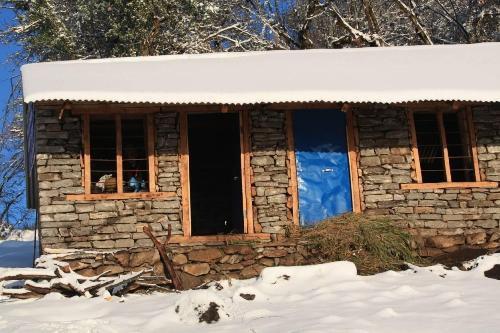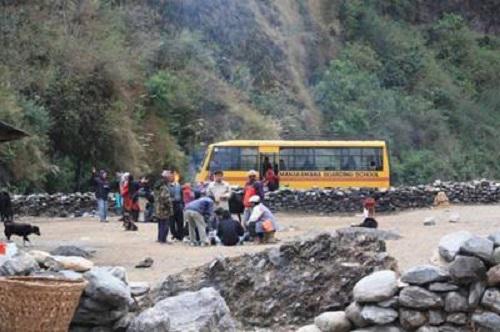Suman Sharma
The aim of this project is to investigate the possible opportunities for ecotourism in the Annapurna Conservation Area and how it would impact on the community and how these two things can be managed side by side. The project will act as a baseline for the development of ecotourism by increasing livelihood opportunities and the conservation awareness level of local people.

Camp site being constructed on the way to Pipar at 2700m by TAAN and ACAP.
Annapurna Conservation Area (7629km2) is one of the best trekking areas in the world and has altitudes from 1000m to the 8091m peak of Mount Annapurna. It is also the most visited trekking area in Nepal attracting 60% of the country’s total trekkers. The main attractions are its rich biological diversity and cultural diversity. The area is home for 101 species of mammals including snow leopard, Musk deer, Tibetan Argali, Tibetan wolf, Tibetan fox and more than 100,000 inhabitants and more than 10 ethnic groups.

Kharpani (hot spring) area being developed as major picnic spot.
Nepal faced severe political turmoil with Maoist insurgents for a decade (1997-2007) and this has had a severe effect on tourism industry. Now the time has come to see what impacts the insurgency has had and what are the possibilities for the future tourist destinations in the area. This project aims to examine the existing tourism level (and that just before the Maoist insurgency) and the benefits and detriments for local people and wildlife from current and possible future tourism. The project will increase the awareness of local people about the possible benefits of future tourism whist also maintaining the biodiversity of the area, i.e. building sustainable tourism which is maintained and managed by local people.
By assessing the features of current tourist destinations the project will identify other possible areas where tourists might visit. The project will also predict the cultural and biological impacts of tourism in current and future tourist destinations, which will aid in the future sustainable management of those areas. The potential income for villages from environmental conservation will also be calculated. This could be a very powerful assessment for future tourism management planning.
The study will be focused in the Pipar Area of Annapura Conservation Area, which is famous for its diversity of bird species. About 474 species of birds including 38 breeding species of birds at risk in Nepal, all six Himalayan pheasants found in Nepal. This area attracts bird tourism and the project will help implicate the conservation management of these species. This project will also increase the level of awareness among the local people and help the local community to sustain themselves via tourism which will have a positive impact on wildlife and culture. Not only will it provide opportunities for enhancing the livelihoods of local people but it will also act as a model to develop ecotourism plan in other parts of the country.